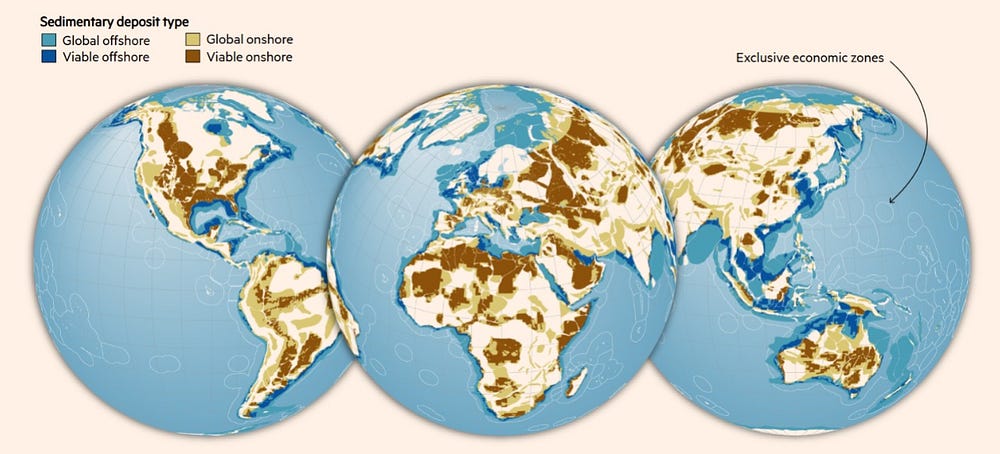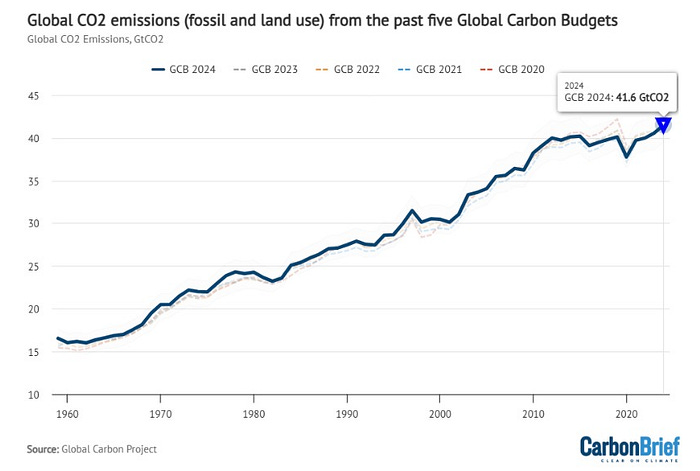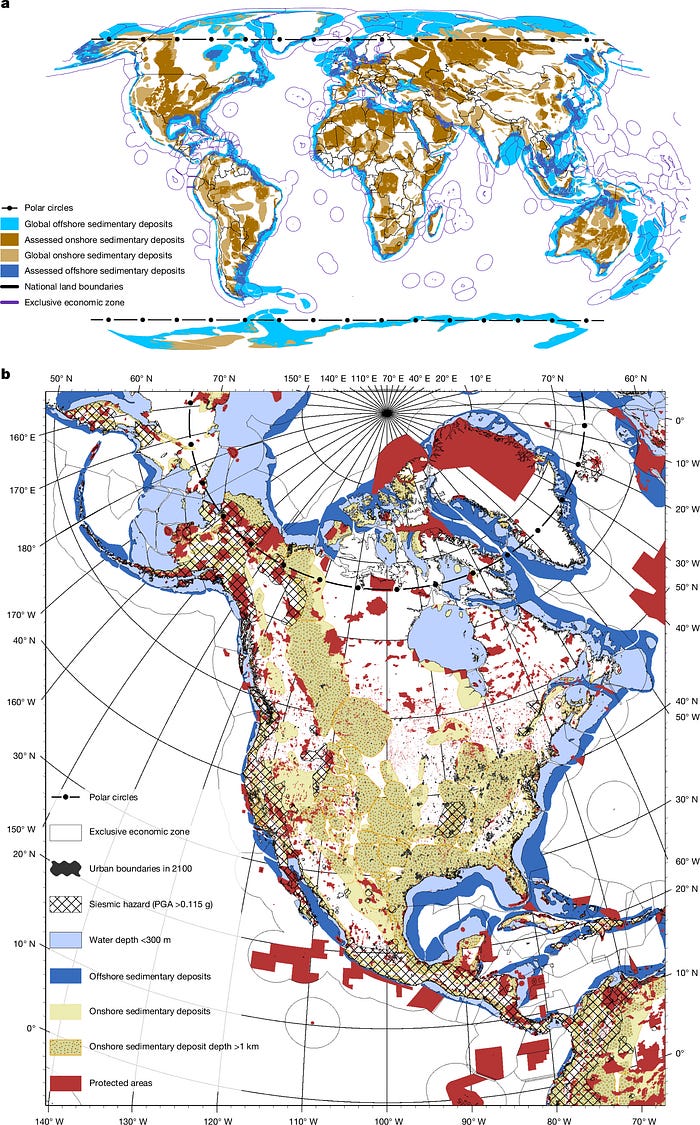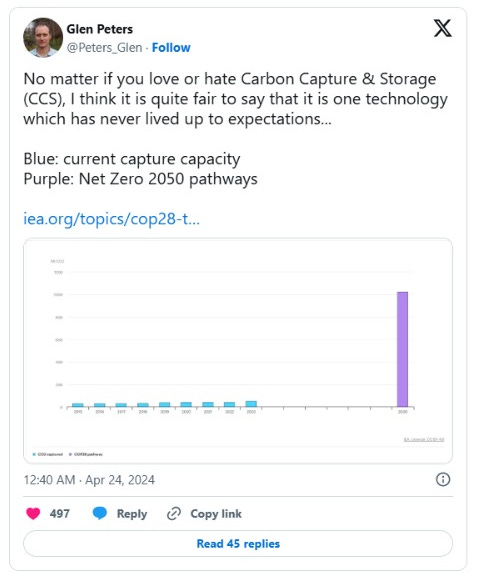Carbon Storage Was Never a Solution
It’s time to end the tale of the sinking ship and the teaspoon
Near the Arctic Circle, I grew up with the idea that the earth could hold secrets forever. Ice preserved mammoth bones for millennia, waters swallowed shipwrecks whole, and the tundra kept its silences better than any human. We want to believe the planet still works that way — that it can take our excess, our smoke, our carbon, and tuck it away safely, out of sight, for generations to come.
That belief has become one of the most seductive climate stories of our time: geological carbon storage. The idea that we can inject billions of tonnes of CO₂ underground, into deep formations, where it will stay trapped as if in a vault. It’s a comforting image — a planetary basement where the mess of the fossil fuel age can be locked away, sparing us the reckoning.
It is also central to the scaffolding of international climate policy. Storing carbon for centuries to millennia underground has long been framed as essential to meeting the goals of the UN Paris Agreement. The logic goes like this: if we can reach net-zero carbon dioxide emissions, global temperatures are likely to level off. Push further, toward net-negative CO₂ and net-zero greenhouse gas emissions, and average surface temperatures could begin to decline. This need has been recognized for decades, resurfacing again and again in UN climate negotiations.
Yet while suited diplomats in fancy conferences repeat the promise, emissions keep rising. Temperatures keep climbing. And the more we cling to storage as salvation, the more fragile the illusion becomes. Basements flood. Vaults crack. So the chimera that we can bury this crisis forever — without changing how we live, what we burn, what we extract — must fade away.
A very recent study cuts through the fantasy: we thought we had a massive warehouse to store all your junk, only to discover it’s just a small closet. And how we choose to fill it will decide whether it buys us some time or simply props up the very industries driving us deeper into collapse.

A Sinking Ship And A Teaspoon
For two decades, carbon storage has been sold in swollen numbers. In 2005, the IPCC spoke of 2,000 gigatonnes of “technical potential.” Industry voices went further, bragging of 10,000 to 40,000 GtCO₂ — a vault so cavernous it could (conveniently) swallow the entire fossil fuel age.
But “technical potential” is a dangerous term. It ignores people living above those basins, the aquifers below them, the political borders cutting straight through them. Add to this that science is merciless in its demands. If carbon is to stay buried, it must be injected one to two-and-a-half kilometers below ground, or under oceans at depths no shallower than 300 meters.
And it forgets that what looks neat in a model often unravels in the real world.
Once researchers applied a precautionary lens instead of blind opportunism — ruling out sites prone to seismic jolts, aquifers that communities depend on, protected ecosystems, and politically disputed territory — the vault collapsed. Out of nearly 12,000 billion tonnes of theoretical capacity, only 1,460 GtCO₂ can actually be considered safe.

That may still sound like a mountain of space. But humanity emits over 40 billion tonnes of CO₂ every single year. So, at that pace, the “safe vault” would be filled in less than 40 years. Even if we used every reserve solely to pull CO₂ from the air, global temperatures would drop at most 0.7 °C — maybe only 0.4 °C if you assume the most conservative projections. A tiny relief for a planet already running hot.
For the first time, science has drawn a clear line: 0.7 °C is the upper limit of what past warming can realistically be reversed underground. Beyond it, we are gambling.
Yet, under almost every low-carbon pathway that climate scientists explore — the scenarios assessed by the IPCC — this “prudent” storage would vanish long before 2200. Some scenarios would empty it by 2100. At current emission rates, the vault designed to slow global heating is like an ice cube in a boiling pot — melting before it can do its job.

The Paris Agreement’s goal of limiting warming to 1.5°C requires us not only to stop emissions but also to remove 8.7 gigatonnes of CO₂ from the atmosphere a year. Well, there simply isn’t enough safe underground space to store all the carbon we need to remove while still continuing business-as-usual emissions.
This isn’t just an abstract problem; it means our main backup plan for addressing climate change is fundamentally flawed. The consequences will affect every community, ecosystem, and future generation unless we dramatically reduce emissions now rather than assuming we can just “clean up” later. The 1.5°C threshold should have long been considered dead by now, and we should have more realistic targets before they keep vanishing one after the other.
And this carbon sequestration illusion only works if the vault never leaks. A tiny annual leak of 0.01% is enough to erase the benefits. Seismic jolts can crack open reservoirs, wellheads can fail, and aquifers can be contaminated.
A vault that seeps is not a vault.

Meanwhile, the reality on the ground is painfully small. Carbon capture and storage today removes just 49 million tonnes of CO₂ per year. That’s 0.1% of what the world emits. Imagine trying to bail out a sinking ship with a teaspoon. And most of that tiny teaspoon isn’t even climate repair. It’s used for enhanced oil recovery — pumping more crude out of the ground. In other words, the technology sold as a lifeboat is strapped to the very ship drilling the next hole in the hull.
Any climate strategy that relies on nascent carbon removal technologies would not constitute a strategy that minimises risks and potential harm to today’s and future generations.
Betting our climate future on unproven carbon removal tech is like planning to pay off credit card debt with lottery tickets. It’s gambling with our children’s future when we could simply spend less now.
Real climate solutions need to work today, not just exist as promises in a PowerPoint presentation.
The Vault Keepers
When you read the new maps of underground storage, one thing is obvious: the vault keepers are the very nations that built the fire in the first place. The United States, Russia, Saudi Arabia, Australia — the world’s biggest historical emitters — sit atop some of the richest geological basins. It is no coincidence. Their fossil-fuel economies were born of the same easy deposits now being repurposed as carbon graveyards.
But look closely at the politics inside that geology. The countries most responsible for the wreckage now stand to profit again from the clean-up. They sold the world oil, coal, and gas; now they could sell it burial plots for the carbon. A convenient symmetry — and a moral outrage.

Others — Brazil, the Democratic Republic of the Congo — also have deep vaults beneath their soils. But why should they volunteer their land as the world’s waste pit without real compensation? Carbon equity is not an abstract slogan. It is about whether history’s winners get paid twice — once to pollute, and again to pretend they can undo it.
The business model is already clear: turn disaster into a new commodity.
And there’s a cruel irony here: the vaults may be state-owned, but the profits rarely are. Sovereign wealth funds — many built on fossil revenues — could bankroll this new chapter, all under the comforting banner of the “polluter pays” principle. But history shows us who really pays: not the sovereigns, but the people whose lives already carry the weight of a chaotic climate.
Storage Is Not A Bridge But An Alibi
When I walk the frozen rivers of Lapland in spring, I see how ice resists — then fractures. First, hairline cracks, then sudden collapse. Carbon storage is sold as if the ice will hold forever. But the vault is small, fragile, and already claimed.
Yet policymakers still talk as if we can pour the smoke of the fossil fuel age into the ground and walk away clean. They promise “net zero” while approving new oil fields. They offer burial plots instead of real reductions. Storage becomes not a bridge, but an alibi. An excuse to keep the fire burning.
Big polluters know this. And it’s not only Big Oil. If Microsoft and
Google, Meta, and Shopify, the tech giants shaping our hyperconsuming, cloud-choked world, are pouring money into carbon removal startups, you have to doubt their intentions. Because how much faith can we put in the very companies that built their empires on endless extraction, endless delivery, endless growth? If their business model is the backbone of the overshoot, why should their “solutions” be trusted to fix it?
Even these new estimates about storage capacity are too optimistic: they did not factor in the economic constraints. Only a fraction of that estimated amount will be accessible at a price society will be willing to pay. So every tonne wasted on offsetting avoidable fossil emissions is a tonne stolen from the few sectors — food, heating — that may truly need it.
Carbon storage should not be a lifeboat for consumption or a license to pollute. Without sharp, near-term emissions cuts, the (inevitable) overshoot of 1.5 °C could be locked in, irreversible, leaving future generations to wrestle with a climate debt we promised to repay.
The real work remains what it always was: cut emissions now, not later. Burn less. Extract less. Consume less.
Storage may buy us time — but time is worthless if we spend it digging the same hole deeper.
May the northern lights guide you,
M.







I think most of the problems we are seeing with carbon capture and storage come from our having handed responsibility for executing it to fossil fuel companies whose incentives are not to succeed but to make money from an appearance of trying to succeed. One example is their insistence on using deep injection of CO2 for storage. They are doing this because they already have the tech for it and use it for petroleum production. Likewise, the main obstacle to CCS (pulling out CO2 from smokestacks) is their insistence on using liquified CO2 in the pipelines, which is dangerous to populations near them. Again, this is just because they already use this approach for oil production.
Here is the simple and safe approach they have ignored: basalt is a very reactive rock, and is extremely widespread all over the world (it is basically cooled lava). It is well known and even proven commercially (CarbFix) that CO2 can be used to carbonate water (to about double the pressure of a carbonated beverage) which, when injected into basalt, will turn into rock within one to two years. There is far more basalt than you could ever use available to store CO2. Also, if you used carbonated water instead of liquified CO2, you would solve the rIsks of pipelines for adjacent populations. At scale it could be a water use issue - except salt water is better than fresh for mineralizing CO2, either seawater or pumped from one of the many saline deposits inland. The real problem is that fossil fuel industries have been given too much responsibility for the process, instead of those without ulterior motives.
Thank you, Ricky! As a retired 70 years of age fellow, it’s way to close to the end of my personal 4th quarter! 😂
But… I hope & pray that possibility of survival still exists! You are a good soul! 👍🙌🙏🏼